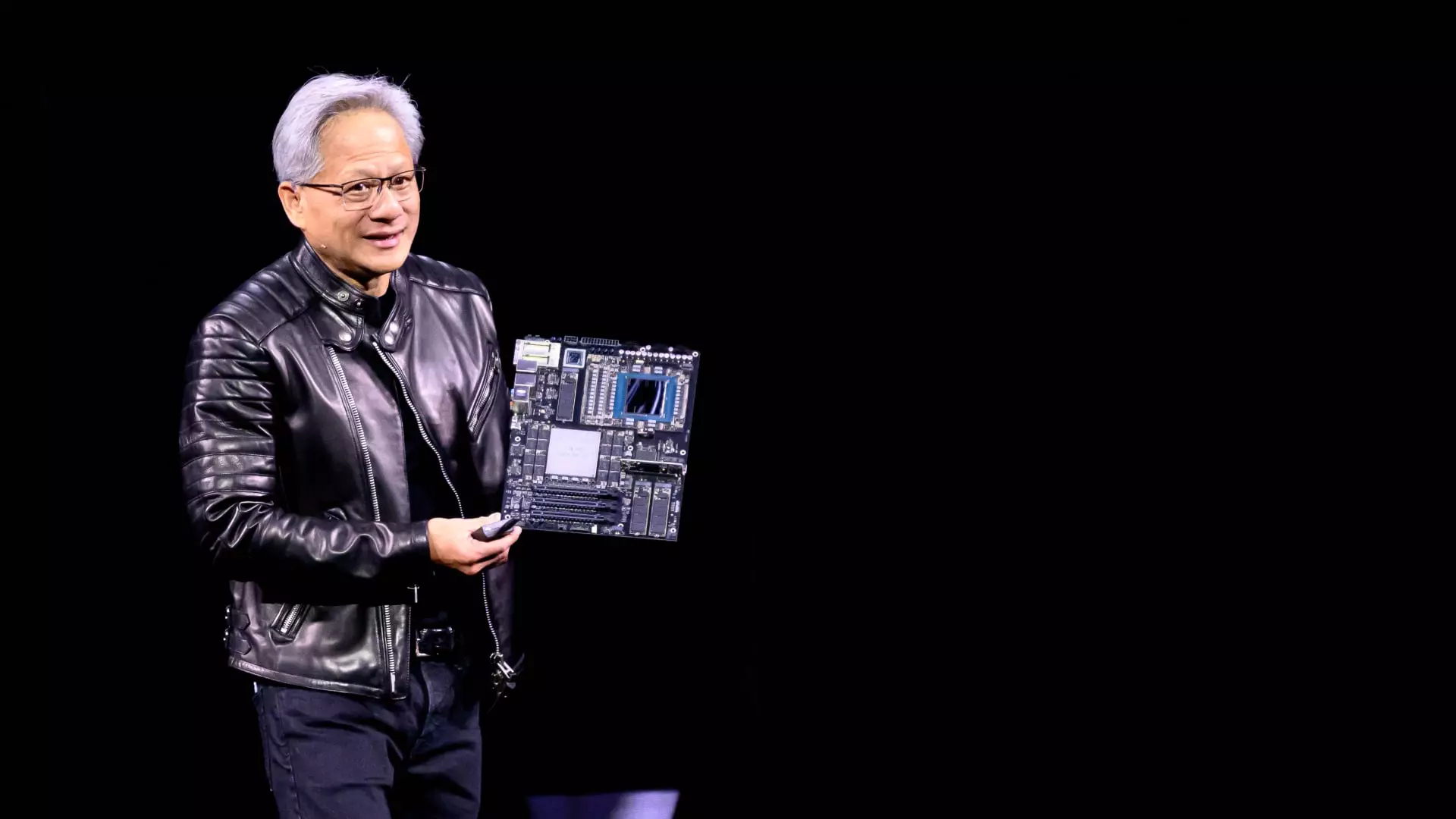At Nvidia’s GTC conference, CEO Jensen Huang painted a vivid image of the future, showcasing the critical role of speed in artificial intelligence (AI) and GPU technology. Over a comprehensive two-hour keynote, Huang didn’t just promote Nvidia’s latest products — he effectively conveyed a compelling philosophy centered on maximizing efficiency and performance through cutting-edge technology. His insistence that customers prioritize the most advanced GPUs highlights a fundamentally transformative shift within the AI landscape. It’s not merely about the hardware; it’s about embracing a new era where speed and capability converge to drive innovation across sectors.
Huang’s projections for the next decade suggest that the business case for investing in faster chips extends beyond mere competitive advantage; it’s portrayed as the gateway to an entirely new realm of possibilities. Simply put, faster chips mitigate costs by enhancing performance exponentially. His mantra, “speed is the best cost-reduction system,” encapsulates a philosophy that transcends traditional thinking about technology expenditures. This sentiment resonates with the demands of an increasingly impatient market clamoring for real-time AI solutions.
The Economic Dynamics of AI Chips
During his keynote, Huang took the extra step of breaking down the economics of Nvidia’s upcoming GPUs, specifically the Blackwell Ultra systems. This wasn’t an act of opacity; rather, it was an attempt to align Nvidia’s vision with the financial realities of its customer base, particularly the hyperscale cloud providers that are rapidly scaling their AI infrastructures. By calculating cost-per-token metrics live on stage, Huang revealed that Nvidia’s technological advancements are aligned with financial incentives that drive cloud computing and AI capabilities.
Such transparency is crucial, especially when acknowledging the massive scale of investment required for AI infrastructure. Huang’s estimates, that hundreds of billions will be earmarked for AI data centers over the coming years, serve as a clarion call for businesses looking to future-proof their operations. Nvidia’s strategy signifies a confidence that few competitors can boast, particularly in the face of burgeoning rivals attempting to develop custom chips tailored for specific applications.
Facing the Risks: Custom Chips vs. Nvidia’s Dominance
Despite the excitement surrounding custom artificial intelligence chips crafted by major cloud players like Amazon and Google, Huang remains steadfast. He argues that these proprietary solutions lack the adaptability necessary to handle the rapid evolution of AI algorithms, emphasizing that many of these recently announced custom chips — often referred to as Application-Specific Integrated Circuits (ASICs) — may never reach the market. Huang’s skepticism suggests a deep understanding of the industry’s ebb and flow, particularly emphasizing the need for chips that can keep up with fast-paced advancements, as opposed to being rigid and one-dimensional.
His perspective serves not only as a defense of Nvidia’s stronghold in the marketplace but also as a cautionary note to those placing bets on the efficacy of custom silicon. Understanding the nuanced landscape of AI development, Huang posits that flexibility and adaptability may ultimately be the differentiators that determine the success or failure of these new entrants.
Looking Ahead: Nvidia’s Roadmap for the Future
As part of the vision laid out, Huang directed attention to Nvidia’s roadmap extending to 2027 and beyond, highlighting upcoming projects such as the Rubin Next and Feynman AI chips. This long-term planning not only demonstrates Nvidia’s commitment to constant innovation but also reflects an acute awareness of the burgeoning demand among cloud providers who are in the process of allocating monumental budgets for AI infrastructure. With clarity around Nvidia’s future offerings, Huang reassures stakeholders that they are not only making sound investments today but are also aligning themselves with a future dominated by Nvidia technology.
Essentially, Huang’s message can be distilled into an encouragement for enterprises to rethink their investment strategies and to consider the strategic advantages that come with adopting Nvidia’s innovative chip designs. In an industry where the pace of change can be dizzying, Nvidia’s vision, centered around speed, adaptability, and economic feasibility, consolidates its standing as an unassailable leader while equipping its customers to excel in an increasingly competitive AI-driven market.


Leave a Reply
You must be logged in to post a comment.